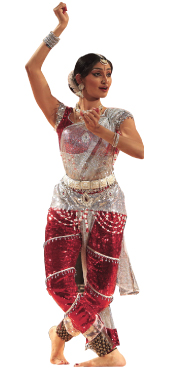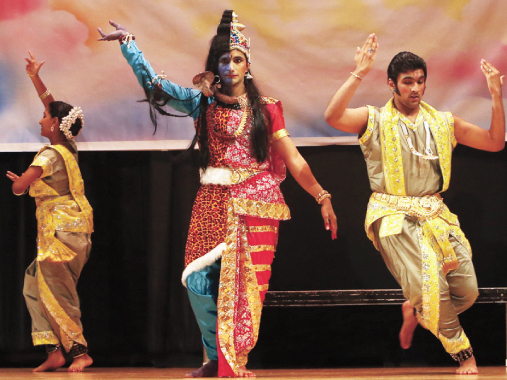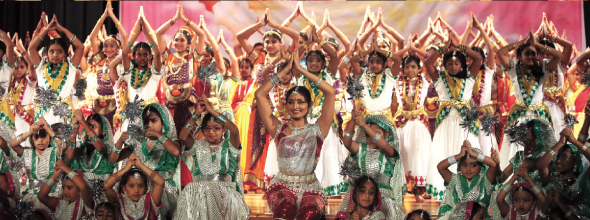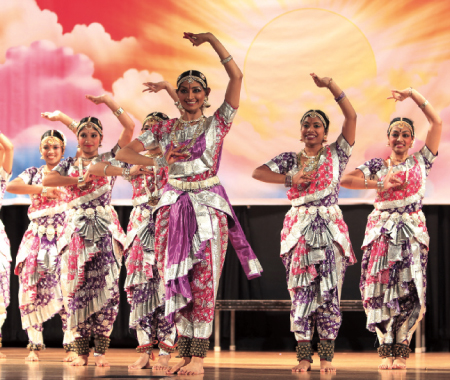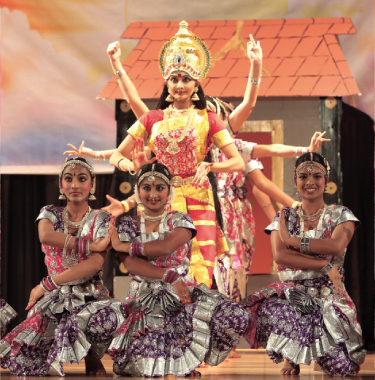Sreepadam Celebrated its 10th Anniversary with “Aaradhana”
HOUSTON: On November 2, a full-capacity audience at the Stafford Civic Center celebrated the 10th anniversary of Sreepadam School of Arts with “Aaradhana – The Festivals of India.” The proceeds of the charitable program benefitted “Embracing the World – Education for Everyone” – a U.N.-endorsed, Indian-based non-profit organization that provides educational services for the impoverished. The acclaimed film & dance artist – Divya Unni – led over 170 students from Sreepadam School of Arts in beautifully-colored groups representing India’s rivers. Using music, dance, and digital visual media, “Aaradhana” explored the diverse array of Indian festivals by focusing on the theme of religious devotion. The dances covered festivals, including Bhogi & Pongal, Makara Vilakku, Shiva Rathri, Vishu. Guru Purnima, Thai Pooyam, Onam, Karthikai Deepam, Krishna Janmashtami, Navarathri, Diwali, Eid, Holi, and Christmas. The dances gave tribute to the richness of India’s cultural diversity through a versatile range of Indian dance styles, including classical, folk, and contemporary.
In the opening invocation item, the garland of swaras (or notes) and the technical building of steps (or adavus) presented the complexity and harmony of India’s cultural identity. “Shiva Rathri” depicted Ardhanarishvara – a composite androgynous form of Shiva and his consort Parvati – depicted as half male and half female – split down the middle. The Ardhanarishvara represented the synthesis of masculine and feminine energies – the source of creation in the universe. “Guru Purnima” – the festival dedicated to teachers – was presented in the Kuchipudi style. The item astounded the audience with 15 dancers performing fast-paced footwork on the edges of a circular brass tray, with brass water pots delicately balanced on their heads. Demonstrating rituals where devotees seek forgiveness for past sins, “Thai Pooyam” presented Kavadi Attam – a dance performed during the ceremonial worship of Murugan. The Kavadi represented a physical burden for which the devotees implore help from their Lord. During “Krishna Janmashtami,” the Rasa Lilas of Vrindavan portrayed Krishna’s play with the gopis, but with a focus upon Radha’s intense love. “Navrathri” – dedicated to the worship of goddess Shakthi – showcased three distinct forms: Durga, Lakshmi, and Saraswathi. In “Eid al-Fitr” – the dance celebrated the rejuvenation of Islam by showing the strengthening of bonds seen between the devotees and God. “Christmas” commemorated the birth of Jesus Christ, showing how Christians all over the world celebrate the miracle of a manifestation of God in human form.
The event concluded with a vibrant finale that incorporated themes of devotion, patriotism, and transcendence of religious differences. The medley skillfully incorporated over 170 students in beautiful costumes and complex formations. With styles of classical, folk, semi-classical, and contemporary choreography, “Aaradhana” paid tribute to the richness and diversity of Indian dance, while serving as a means to bring awareness for the need for religious harmony.
Very fittingly, the program not only met Sreepadam’s mission for its students to find connections to their cultural roots, but also served as a way for them to charitably serve those in need in Indian society. Sreepadam is still accepting any contributions towards “Embracing the World – Education for Everyone.”
For further information regarding the charity, visit www.embracingtheworld.org.


